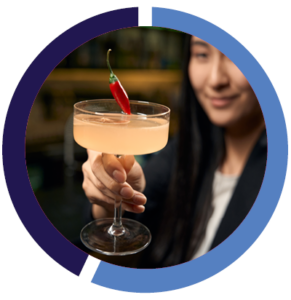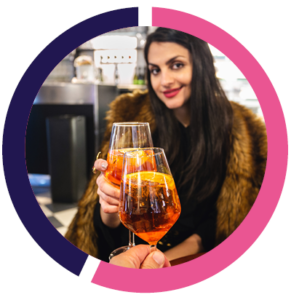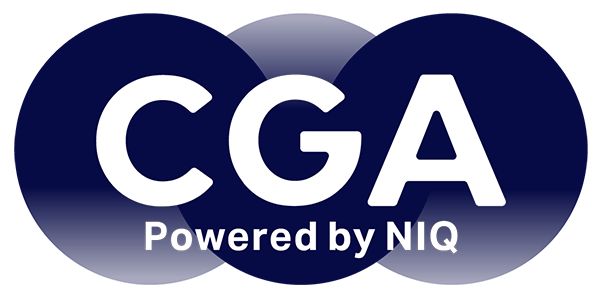
At the start of any year, social media feeds and opinion pieces are full of prophesies and projections around the latest trends set to take the sector by storm, but breaking through into the consciousness of the mainstream masses is a stubborn task. Will 2025 be the year in which cut-through innovation takes a back seat?
Consumer behaviour in bars, restaurants, pubs and clubs is changing. Not only are we seeing a dichotomised consumer base, with an ever-increasing chasm between frequent and infrequent visitors to the sector (and associated discretionary spending between the two), we are also living through a time of changing choices. No longer is the primary purpose of visits to the sector around consumption, but more focussed on connection, enjoyment and appreciation of the experiences, food and drink that the sector has to offer. None of this naturally lends itself to a ‘riskier’ choice on a new product or category, which may be a waste of one of the few drinks consumed in an On Premise occasion.
At the same time, the drinks brands and categories that have won have tended to be those that are long-established, tried and trusted. Indeed, the number of categories and drinks that On Premise visitors count as their typically chosen options has almost universally fallen, with consumers opting for what they perceive as safer, more reliable options.
The success story of the drinks sector post-Covid is not a new concept, a flavour extension or a cut-through new brand or serve. Instead it is a brand that was in near-terminal decline in the not too distant past, but has been a staple of On Premise outlets for centuries, which has been taking bars and restaurants by storm. Yes, Guinness has grown in popularity and volumes to the extent that there was near-national outrage when shortages hit the UK sector in December. That’s right, a nearly 300-year-old brand was universally the biggest drinks trend of 2024, without the need to innovate across new extensions or categories.

Guinness was able to capitalise on multiple favourable factors to drive growth; an instantly recognisable product, a brand with genuine authenticity and heritage, a ritual and perfect serve that is loved by brand afficionados and, of course, as is ever the case with Guinness, a world-leading marketing, strategy and activation team. Combine this cocktail of ingredients and new brands and concepts just cannot compete in the current market landscape.
Other success stories follow a similar pattern; all of the above can be applied to the flourishing behemoth that is Aperol, while the number one winning beer brand in Germany is Augustiner, a brand that meticulously ensures that it is only served in venues that provide the perfect draught experience, telling its story of authenticity and heritage at every opportunity. A perfect serve and iconic glass have also fuelled the beer growth of the likes of Loburg in France and Asahi in the UK. Could 2025 therefore be the year that Stella Artois – founded 600 years ago and retaining an iconic serve – tops the trend charts? Or how about the martini as a long-established marker of quality, sophistication, with a ubiquitously identifiable and traditional cocktail serve? Indeed, one trend that has caught my eye recently has been that of ‘mini-tinis’, with gulp-sized versions of the cocktail appearing on menus across the globe in the past year or so.
As appealing as it is to gulp my way through different martini variations, like a grown-up pick’n’mix is, it’s hardly a new category or brand that is shaking things up. And that lack of successful innovation does pose a genuine worry for the sector. Yes, consumers are looking for tried and trusted options, but it is excitement and innovation that keeps the sector healthy and brings consumers back for more. As TikTok feeds overflow with bubble tea, Korean beauty products and Persian fruit leather (I’ve no idea either…), there is a drift of consumers from the On Premise to other channels to experience the latest new trend.

Of course, innovation should never die in what is an intrinsically creative sector. Even a quick glance at the menus of the best bars in the world will highlight that we are blessed with a swathe of world-leading mixologists possessing the most inspired minds and original souls across any creative sector.
And it is often flavour where this imaginative spark reveals itself. A skim of the Worlds 50 Best award-winning cocktail menu for 2024 (the ever-innovative Lyaness) showcases flavour innovation in abundance. Featuring the likes of Szechuan spice, cornflake liqueur and even a ‘peated parsnip amazake’, sticking to the traditional is not something that could be levelled at Mr. Lyan.
Slightly closer to the mainstream however, don’t be surprised to see further innovation around spicy drinks and citrus and yuzu inspired cocktails continue to penetrate mainstream cocktail menus.
Of course, the spicy marg has led this trend, while there is no spicy cocktail as ubiquitous as the bloody mary, but how about spicy riffs on other cocktails as a trend to explode into the mainstream this year? A spicy mezcal negroni sounds delicious, whereas who would say no to a fiery gingery Moscow mule or dark and stormy?
Outside of cocktails, other categories will continue to develop and emerge, with headroom for further growth no and low alcohol options. However, my personal perspective is that the narrative and marketing around this particular category is far too gloomy, much like the dark January nights in which it gains the greatest share of the limelight. Indeed, brands within the category are too often positioned as a miserable alternative, a choice of abstinence, moderation and self-restraint, rather than celebrated as products that actually are enjoyable and can be celebrated. With this in mind, it is no surprise to see products such as Botivo and Lucky Saint, who enthusiastically promote their exceptional products, continue to grow.

The other dimension impacting innovation may well be geography. Going back to the Guinness example, a strong sense of authenticity and heritage is rooted in its Dublin homeland, while the quintessential Italian stylishness that the negroni and Aperol Spritz have capitalised on has undoubtedly contributed to growth.
So which new hotspots of authenticity may emerge in 2025? Well, there is no doubt that sub-Saharan Africa oozes vibrancy, coolness and youthfulness, with a growing population of ‘gen z’ers, influencers and deep and admired cultural roots. It is therefore perhaps not a surprise to see the recent acquisition of South African gin producer Inverocche Distillery, but my tip for ‘one to watch’ in this space is Spearhead Spirits, the award-winning premium African spirits company looking to put African spirits on the mainstream map.
There is also intrigue around the new wave of drinks emerging from the another sub-continent, this time Asia. India and Sri Lanka have long been seen as emerging On Premise landscapes, with world renown venues such as Sidecar in New Delhi and Smoke & Bitters in Pehebiya, but we are now starting to see drink brands emerging from the region to infiltrate global consciousness on global scales. Goa’s Nao Spirits has grown significantly over the past decade, while Rockland Distilleries celebrated a century of business in Columbo in 2024, but is increasingly drawing intrigue for its selection of premium arrack and gin, all of which tell authentic tales rooted in heritage and a clear sense of place.
emerging On Premise landscapes, with world renown venues such as Sidecar in New Delhi and Smoke & Bitters in Pehebiya, but we are now starting to see drink brands emerging from the region to infiltrate global consciousness on global scales. Goa’s Nao Spirits has grown significantly over the past decade, while Rockland Distilleries celebrated a century of business in Columbo in 2024, but is increasingly drawing intrigue for its selection of premium arrack and gin, all of which tell authentic tales rooted in heritage and a clear sense of place.
For alcohol brands, curating authentic experiences through storytelling and activation will remain the most successful path to growth. Of course, we will continue to be attracted by the ‘here today, gone tomorrow’ fads and trends that explode from a very small base (and then consequently collapse), but don’t be surprised if the trend of 2025 is something that we have loved for decades.
To learn more about CGA’s REACH survey and other sources of consumer insights for suppliers and operators across global markets to support your global strategies, contact Charlie Mitchell here.
Originally published in Global Drinks Intel Magazine




